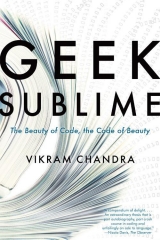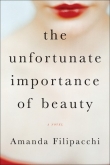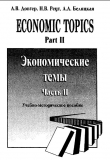
Текст книги "Geek Sublime: The Beauty of Code, the Code of Beauty"
Автор книги: Vikram Chandra
Жанры:
Современная проза
,сообщить о нарушении
Текущая страница: 6 (всего у книги 15 страниц)
Modern linguistic theory, in its turn, became the seedbed for high-level computer languages. To ease the pain of programming in low-level languages like machine code and assembly, computer scientists were driven to create artificial, formal languages. The efforts of linguists toward understanding language in formal and generative terms led to the work of John Backus, the IBM language designer whose team created FORTRAN, the first widely used high-level programming language. Backus proposed using “metalinguistic formulae” to describe the working of a programming language in 1959. This method was further simplified by Peter Naur, and the resulting “Backus – Naur Form” remains the primary method of describing and generating formal computer languages. Backus apparently came up with his ideas knowing nothing of Panini, at least directly, but, as the Sanskritist Murray Emeneau put it, “Most of the specific features that are taken … to distinguish an ‘American’ school of linguistics from others are Bloomfieldian, and … many are Paninean.” 21In 1967 a programmer named Peter Zilahy Ingerman wrote to the Communications of the ACM(Association for Computing Machinery) to argue that “since it is traditional in professional circles to give credit where credit is due, and since there is clear evidence that Panini was the earlier independent inventor of the notation, may I suggest the name ‘Panini-Backus Form’ as being a more desirable one?” 22
Panini’s analysis and innovations may therefore be seen as the foundation of all high-level programming languages. But the Ashtadhyayialso had an indelible effect on Sanskrit, the language he was describing: it gave this spoken tongue the stability of formal languages – like programming languages – in which a set of rules precisely constrains the symbols, syntax and usages. Natural languages have the tendency to change over time, but Sanskrit has remained astonishingly unchanged in the two and a half millennia since Panini. There have been strong trends toward certain usages, such as the use of compound words, but in general “the stress on refinement and correctness, the overwhelming anxiety to live up to a felt Paninian ideal, kept the language formal for everyone, and channelled creativity towards involution, elaboration, and increasing precision.” 23
So one of the problems of working with Sanskrit texts is that internal linguistic usages give you very little evidence, if any, of provenance and dating. If you had a pandit in contemporary Varanasi write a letter in Sanskrit and time-machined it back 2,000 years, his ancestors would be able to read it with perfect ease. In Sanskrit, therefore, the usual distinction between normal and formal language is collapsed, and the original derivation of the language’s name from the root samskrta, “constructed, finished, well or completely formed,” carries precise denotative value. It is only later that “Sanskrit” comes to suggest refined speech, to refer to the language of the shishta, the educated, the superior, the polite.
Then, as now, Indians spoke more than one language in daily use. Sanskrit was the eternal language of the cosmopolis, of the marga, the path; the Prakrits were the “natural, normal, ordinary” regional languages, the languages of desha, of place. Because Prakrits were subject to change, the stricter grammarians regarded them as apabhramsa, “degenerate languages” that had sloughed off from the eternal Sanskrit through careless usage. People spoke both Sanskrit and Prakrits, and they were not – as elsewhere in the world – speaking two registers of the same language. They existed in a condition that is better described as “hyperglossia” than “diglossia”: “What we encounter is not an internal split (di-) in registers and norms, typically between literary and colloquial usage,” Sheldon Pollock tells us, “but a relationship of extreme superposition (hyper-) between two languages that local actors knew to be entirely different.” 24
The Kamasutra, a Sanskrit text addressed to urban sophisticates, advises that “by having one’s conversations in the assemblies neither too much in Sanskrit nor too much in the local language a person should become highly esteemed in the world.” 25Too much eternal language and you revealed yourself as a total margasnob; too much Prakrit, on the other hand, marked you as a desi bumpkin. Sanskrit drama reproduced these social dynamics as a convention: the upper-class males – kings, ministers, educated Brahmins – spoke Sanskrit; everyone else spoke Prakrit: merchants and bankers, women (with the exception of courtesans), and of course the lower classes.
Sanskrit – once the language of liturgy – was officially available only to the “twice-born” of the caste system, to its top three tiers of Brahmins, Kshatriyas (warriors), and Vaishyas (traders). Sudras – the manual laborers, the people who provided services – were forbidden to learn or speak Sanskrit, as were those who fell outside the caste system altogether, such as tribal peoples. Thus those who spoke against the Brahminical system – the Buddha, for instance – often used Prakrit languages because Sanskrit was marked as the language of the elite.
Whatever its social value, Sanskrit’s stability and emphasis on precision meant that it was regarded as an ideal language for the sciences and philosophy. Since it was believed to be an eternal language, the fifty phonemes of Sanskrit, the matrka, were regarded as the root vibrations from which the universe had emerged, and were sometimes worshipped as the “little mothers.” 26Sanskrit phonemes and words therefore had an elemental, essential link to reality that other languages lacked. This view was challenged by Buddhist thinkers who argued that “the signifier is related to the signified as a matter of pure convention,” but the notion that the truth could only be spoken in Sanskrit, and grammatically correct Sanskrit at that, was immensely persuasive. 27Two monks were said to have argued that the Buddha’s words should be translated into Vedic Sanskrit, since people were corrupting them by repeating them in local dialects. The Buddha himself rebuked them, “Deluded men! This will not lead to the conversion of the unconverted,” and he commanded all monks, “You are not to put the Buddha’s words into [Vedic-Sanskrit] verse. To do this would be to commit an infraction. I authorize you, monks, to learn the Buddha’s words each in his own dialect.” 28This injunction was obeyed, and Pali, “a new and parallel sacred language,” was created by Buddhists, and yet, by the second century CE, “a vast Buddhist canon in Sanskrit” had been created. 29The rebels against Vedic authority – the Buddhists, the Jains, the Tantrics – had to speak in Sanskrit after all.
It was perhaps the multitude of viewpoints and ideologies attempting to speak to each other and against each other in Sanskrit that intensified its grammarians’ search for even more exactness. Beginning in the fourth century BCE and culminating in the eighteenth century, an effort was made to create a shastricor scientific Sanskrit that could “formulate logical relations with scientific precision.” 30In this specialized, condensed Sanskrit, the sentence “Caitra goes to the village” would be rephrased as “There is an activity which leads to a connection-activity which has as Agent no one other than Caitra, specified by singularity, [which] is taking place in the present and which has as Object something not different from ‘village,’”
The sentence “Out of friendship, Maitra cooks rice for Devadatta in a pot, over a fire” would be broken down into:
(1) An Agent represented by the person Maitra;
(2) An Object by the “rice”
(3) An Instrument by the “fire”
(4) A Recipient by the person Devadatta
(5) A Point of Departure (which includes the causal relationship) by the “friendship” (which is between Maitra and Devadatta);
(6) The Locality by the “pot” 31
The shastricversion of the original sentence would therefore be something like:
There is an activity conducive to a softening which is a change residing in something not different from rice, and which takes place in the present, and resides in an agent not different from Maitra, who is specified by singularity and has a Recipient not different from Devadatta, an Instrument not different from … 32
and so on.
So the shastricthinkers tried to create a low-level version of Sanskrit, a counterpart to assembly code. In fact, Rick Briggs, a NASA specialist in artificial intelligence, points out that this decomposition of natural language is very similar to what computer programmers do when they attempt to represent knowledge in semantic nets, which use “triples” to embody logical relations: “cause, event, friendship; friendship, object1, Devadatta; friendship, object2, Maitra; cause, result, cook; cook, agent, Maitra …” and so on. Briggs writes:
It is interesting to speculate as to why the Indians found it worthwhile to pursue studies into unambiguous coding of natural language into semantic elements. It is tempting to think of them as computer scientists without the hardware, but a possible explanation is that a search for clear, unambiguous understanding is inherent in the human being. 33
The extraordinarily logical nature of Sanskrit, the fact that “we are lakṣaṇaikacakṣuṣka, solely guided by rules,” that “correctness is guaranteed by the correct application of rules,” that you can generate a grammatically correct word or phrase you need by applying these rules – all this leads to a strong similarity between it and modern programming languages. The Ashtadhyayiitself is replete with features that resemble modern programming constructs: recursion; multiple inheritance (a rule based on other rules acquires all the properties of the parent rules); context-sensitive and context-free rules; conflict resolution for rules; string transformations; ordered operations; a metalanguage; and so on. 34Programmers who know Sanskrit sometimes claim that it would make the perfect programming language, endlessly rigorous and endlessly flexible. 35
The inheritors of the Paninian tradition were deeply concerned with the relationship between language, meaning, and function: How is meaning transferred? How is it understood? Does language impel action? These questions became particularly urgent when these theorists were confronted by belletrist poetry written in the unchanging formal language of science and scripture. Over the centuries, Sanskrit developed a flourishing culture of kavya—poetry – and so the philosophers of language had to engage with beauty. Their investigations took them inescapably toward considerations of aesthetics: How was beauty produced in language? How does beauty affect or influence the reader, the viewer? Like programmers with their discussions of the “eloquence” of code, the classical Indian theorists tried to think about the effects that flowed from formal-language texts and went beyond the purely functional.

Until about the mid-ninth century CE, the thinkers of the Sanskrit cosmopolis who were interested in the nature and epistemology of literary beauty concerned themselves with the formal qualities of texts; they thought of poetry as language made beautiful through the operations of certain constructions: simile, metaphor, metonymy, double entendre or puns, alliteration, sound, rhythm, and so on. These figures were alamkaras, ornaments, which beautified language in much the same way that jewelry embellished a body. Some scholars ascribed a more central role to ritior “style,” to gunas or “qualities” such as ojas, “strength” or “vigor” (achieved, for example, through the use of long compounds in prose); prasada, clarity or lucidity; samata, the uniformity of diction; sukumarata, softness or delicacy; etcetera. These qualities, the adherents of ritiargued, produced beauty, which was in turn heightened by figures of speech. Whatever specific emphases the Indian aestheticians may have preferred in their writings on beauty, all of these early scholars were formalists; poetics itself was alamkara-shastra, the study of ornamentation. Their critical methods were heavily particularistic, and they therefore produced exhaustive catalogs of alamkaras and their effects, of the varieties and subvarieties of linguistic structures used by writers.
The theorist Anandavardhana (820–9 °CE) caused an upheaval among these alamkarikaswith his treatise Dhvanyaloka(The light of suggestion). Until Anandavardhana, Indian philosophers of language had accepted two main modes of signification through which language conveyed meaning: abhidha, the literal or the denotative, and lakshana, the metaphorical and figurative, the connotative. Anandavardhana proposed that poetic language set yet another semantic function into play: suggestion. The stock example used to illustrate the workings of suggestion in mundane language is the simple sentence, “The sun has set.” An eleventh-century theorist wrote:
The denoted meaning of a word is one and the same for all persons bearing it; so that it is fixed and uniform; the denoted or directly expressedmeaning of the words “the sun has set” never varies (is fixed), while its suggestedmeaning varies with the variation in such accessory conditions as the context, the character of the speaker, the character of the person spoken to, and so forth. For instance, the words “the sun has set” suggests (1) the idea that “now is the opportunity to attack the enemy” (when they are addressed by the general to the king);—(2) “that you should set forth to meet your lover” (when addressed by the confidantto the girl in love)
and so on until “(10)—‘my love has not come even today’ (when spoken by an impatient girl waiting for her beloved’s return from a journey); thus, in fact, there is no end to the number of suggested meanings.” 36
Anandavardhana’s assertion was that in literature, suggestion or vyanjanaadded layers of meaning to the text that were not apparent in the denotative or figurative content of the language; vyanjanais derived from the root viplus anj, “to reveal, manifest”– vyanjanatherefore manifests a multitude of meanings within the reader. And, Anandavardhana argued, when “sense or word, subordinating their own meaning, suggest that [suggested] meaning”—that is, when the denoted and figured meaning becomes less important than the manifested, unspoken meaning – that poetry becomes “the type of poetry which the wise call dhvani.” 37 Dhvaniderives from dhvan, “to reverberate”; dhvanipoetry therefore causes an endless resonance within the reader—“the suggested sense [flashes] forth in an instant in the minds of intelligent auditors who are averse to the literal sense and in quest of the real meaning.” 38So the echoes of dhvaniare available only to those who are capable, who are alert to the possibilities of poetry. Dhvaniis “not understood by the mere knowledge of grammar and dictionaries. It is understood only by those who know the true nature of poetic meaning.” 39 Dhvaniis “the soul of poetry.” 40
Anandavardhana does not claim that he is inventing anything new when he speaks of dhvani: it is “found in the works of great poets. It is that which appears as [something] separate from the well-known elements [of poetry].” The reason we call some poets “great” is because their work is resonant with dhvani, which is something that cannot be described or analyzed by listing their beautiful figures of speech or pointing at their style; dhvaniis not accounted for by the then-current theories of alamkara-shastra.And yet, dhvaniis what makes poetry beautiful. So Anandavardhana insists that he is just naming something that already exists, and showing us how to think about it. He shows us different kinds of dhvaniin verses taken from the epics, from the renowned poets of his era, from famous poems in Sanskrit and Prakrit. For instance:
O holy monk, wander without fear.
That little dog was killed today by him—
that violent lion living in the thickets
on the banks of the Godāvarī River. 41
Here the speaker is a woman, and what is being suggested is a vastu, a narrative element: the woman wants to keep the wandering monk away from a trysting place where she meets with her lover. So what we have here is vastu-dhvani, through which the poet can suggest things, facts, situations, prohibitions, injunctions. In this poem, the denotative meaning is exactly the opposite of what she really wants, what she is really doing; what the reader grasps is beyond abhidhaand lakshana.Here is another famous example of vastu-dhvani:
Mother-in-law sleeps down there, and I here.
Look while day remains, O traveler.
Do not, blind in the night,
lie down in my bed. 42
The presumed speaker is a lovelorn woman, a familiar type within the conventions; this married woman is extending – or suggesting – an invitation.
Dhvanican also suggest a figure of speech, an alamkara.So:
O lady with tremulous long eyes,
as your face
completely fills the directions
with the radiance of its beauty,
the ocean now remains calm,
absolutely still.
And so I know it is nothing
but an insentient mass of water. 43
The ocean is not stirred now—as it was a moment ago, when the moon rose – therefore it must be truly insentient. The eyes are tremulous – perhaps from momentary jealousy? – but now the smiling face “fills the directions.” What is being suggested here is a metaphor, the beautiful face as the moon. This is the second variety of suggestion, alamkara-dhvani.
But the most powerful dhvaniin poetry, the poet’s most desired effect, is the suggestion of rasa. Rasais a term which, until Anandavardhana, had mostly been used in dramaturgical texts. At some time between 200 BCE and 20 °CE, a perhaps-apocryphal sage named Bharata is said to have written the Natyashastra(Treatise on the drama). The Natyashastrais a theater professional’s handbook: it includes chapters on what a playhouse should look like; on different gaits; the use of local dialects; costumes and makeup; on the factors that lead to the success of a dramatic performance. The sixth and seventh chapters famously analyze the nature of aesthetic pleasure, rasa.According to Bharata:
People who eat prepared food mixed with different condiments and sauces, etc., if they are sensitive, enjoy the different tastes and then feel pleasure (or satisfaction); likewise, sensitive spectators, after enjoying the various emotions expressed by the actors through words, gestures and feelings feel pleasure, etc. This (final) feeling by the spectators is here explained as (various) rasa-s of natya[drama]. 44
So rasa—the word literally means “taste” or “juice”—is not emotion ( bhava); it is the aestheticized satisfaction or “sentiment” of tasting artificially induced emotions. Generations of thinkers developed the notion of rasaalong with a notion of the ideal viewer; the locus of rasawas this viewer, not the actors or the stage. Rasais what the drama produces in the sahrdaya, the sophisticated “same-hearted” connoisseur who is the playwright’s necessary counterpart. The sahrdaya—because of education, experience, and temperament – is able to experience rasaprecisely because he or she does not identify in a personal, egoistic way with the tragedy on the stage. The naive spectator who ascribes some sort of reality to what is happening on the stage and identifies personally with the emotions of the characters is incapable of rasa, which is an impersonal, disinterested pleasure. One might say that a certain psychical distance is necessary for rasato be experienced. Rasais sublime.
On stage, the characters and situation and the patterning of events make up the determinants or catalysts, the vibhavas; the actors portray the consequent outward manifestations ( anubhavas) such as speech, bodily posture, and involuntary reactions (such as trembling). In response to the actors’ depictions of momentary situations like a waiting lover’s anticipation or doubt, the spectator experiences fleeting emotional states ( vyabhicaribhavas); and all of these various feelings come together – like condiments and sauces – to allow the viewer access to a stable emotion, a dominant mood, a sthayibhava, such as grief. Note that this stable emotion is in the viewer; it is a “permanent emotional state” that is ever present in all human beings as a potential, a latent trace. The actors cannot act out a sthayibhava—it really doesn’t matter what the actors feel or don’t feel; the purpose of their craft is to allow the sahrdayaaccess to his or her own stable emotions.
And, very importantly, the stable emotion is notthe rasa.If the actors portray a scene that allows access to the stable emotion of grief, shoka, what the viewer relishes is the rasaof karuna, pathos. The rasais in the tasting of grief, in the relishing of grief, in the reflective cognizing of grief. If the actors portray desire, rati, the viewer relishes sringara, the rasaof the erotic. The pleasure of rasacomes from the meta-experience of experiencing oneself experience the stable emotions.
Bharata names eight rasas in all; so, in addition to karunaand sringara, the viewer enjoys hasya, the comic; raudra, the wrathful; vira, the heroic; bhayanaka, the terrible; bibhatsa, the disgusting; and adhbuta, the wonderful. A ninth rasawas added by later theoreticians: shanta, the peaceful, which arises from the stable emotion of vairagya, detachment, dispassion, and which is manifested especially by epics like the Mahabharata, which place the specificity of human striving and passion against the vastness of time.
According to Anandavardhana, poetic language can manifest dhvanithrough the operation of vyanjana, suggestion, and so offer the reader an opportunity to taste rasa.For instance:
While the divine sage was speaking
to Pārvatī’s father,
she, eyes downcast,
counted the petals
of her toy lotus. 45
The “divine sage” has come to propose to Himavata, the king of the Himalayas, that he marry his young daughter Parvati to the god Shiva. Parvati is in love with Shiva, and has performed great austerities to win him, but in this moment, Anandavardhana says, “the counting of the petals of the lotus subordinates itself and without the help of any verbal operation reveals another matter in the form of a transient state of mind ( vyabhicāribhāva) [of the emotion love, namely shyness].” 46In the perception of the reader, the shyness of Parvati suggests desire, love. The reader therefore relishes the rasaof the erotic, sringara, evoked through dhvani.
We can see that the operations of suggestion are heavily dependent on context (as in “The sun has set”). Whereas the denotative and connotative meanings of a phrase or a text are limited, vyanjanais infinite and can never be exhausted. Consider the following verse, in which the speaker is Rama, the hero of the Ramayana; the season is the monsoon, when lovers come together. Rama has lost his kingdom through court intrigue, has been banished to the wilderness, has faced many dangers, and his beloved wife has been kidnapped by the evil Ravana.
Clouds smear the sky,
flocks of cranes tremble
across their viscous blue-black beauty.
The winds sprinkle rain, the peacocks call
their soft cries of joy.
Let all this be, as it likes. I am Rāma.
I am hard-hearted, I can endure all.
But Vaidehī? How will she survive?
Ah alas, my goddess, be strong!
47
Anandavardhana writes, “In this verse, the [suggestive] word is ‘Rama.’ By this word we understand Rama as developed into various suggested qualities, not simply as the possessor of the name.” 48That is, the reader already knows that the speaker is Rama; no information is added here by the use of the name. But the name evokes, for the reader, all the tragedy and suffering that this man has already experienced and will experience in the future. In a flash, this sudden explosion of light illuminates the past and the future.
A century later, the greatest exponent of rasa-dhvanitheory, Abhinavagupta, wrote about this verse:
The suggestions of other properties … are endless; for example, his banishment from the kingdom, etc. And since these suggestions are countless, they cannot be conveyed [simultaneously] by means of the denotative functions of words. Even if these innumerable suggested properties were to be conveyed [by denotation] one by one, since they will not be had in one single act of cognition, they will not be the source of a wondrous aesthetic experience and hence they will not give rise to a great beauty. But if these properties are suggested, they will assume countless forms ( kiṃkiṃ. rūpaṃ na sahate) because in the suggestion their separateness will not be clearly perceived. In this way they will become the source of a strikingly beautiful aesthetic pleasure that is analogous to the flavor of a wonderful drink, or cake, or sweet confection [where the individual ingredients cannot be separately tasted but yet add to the flavor of the final product]. For it has been said already [by Anandavardhana] that a word which is suggestive reveals a beauty “which cannot be conveyed by another form of expression.” 49

Rasa-dhvanican operate at the level of a word, a sentence, or an entire work. According to Anandavardhana, rasais “an object on which no words can operate directly,” and therefore dhvaniis the only way to manifest rasa. 50So Anandavardhana might have said to an aspiring writer: suggest, don’t tell. Dhvaniis literally “reverberation,” and is often compared to the “sounding of a bell” or “a needle falling through a pile of lotus leaves.” If we hear the phrase, “A village on the Ganga” (in Sanskrit, gangayam ghoshah, literally “a village in the Ganga”) we understand that the village cannot literally rest on the water, and that we are talking about a village located on the banks of the Ganga. This would be an example of figurative speech. But Anandavardhana would argue that this phrase about the holy river also carries a suggestion – or causes in the listener the manifestation – of coolness, sanctity. This underlying, affective meaning does not emerge from the denotative or figurative aspects of the phrase. This kind of suggestion functions in all speech, is present even in mundane language, but poets knowingly and intentionally concentrate vyanjanato construct a coherent, sustained engagement within the reader, and thus to manifest dhvani, and hence rasa.Patrick Colm Hogan writes:
Rasadhvani, the “truest” form of dhvani, it is an experience – along the lines of what we would call “a moment of tenderness” or “a pang of sadness.” It is, in short, an experience of rasa… [These rasas] are evoked through the clouds of non-denumerable, non-substitutable, non-propositional suggestions which surround these texts. 51
The very sounds and rhythms of language – which preexist meaning – contribute to our experience of rasa.Abhinavagupta says that when we hear poetic language
without waiting for our understanding of the expressed meaning, [the stylistic qualities] set about building up the rasas, giving us a foretaste ( āsvāda) of them. This is as much to say that as the rasasare suggested by style ( saṅghaṭanā), the ground is laid for the relishing of a rasaat the very beginning of the appropriate style before our understanding of the meaning has come into play; and that it is on this account that the rasa, even at the later moment, after we have understood the expressed meaning and when the rasahas assumed its full flavour, does not appear to have arisen later [than our understanding]. 52

Anandavardhana observes, “When ornamented by even one from among the varieties of dhvani, speech acquires a fresh colour, even though it follows a subject matter that has been treated by poets of the past.” 53Since the properties manifested by dhvaniare countless, “poetical material … finds no limit …”
Not even Vacaspati [the god of speech] in a thousand efforts could exhaust it, any more than he could exhaust the nature of the universe.
For just as the nature of the universe, although it has manifested this marvellous proliferation of matter through the succession of past ages, cannot be said now to be worn out and unable to create anything new, just so is the situation in poetry, which, although it has been worked over by the minds of countless poets, is not thereby weakened, but increases with ever new artistic abilities. 54
Anandavardhana accepted that there may be poetic texts in which the suggested meaning isn’t the dominant pleasure, or even present at all; he rather disdainfully refers to the latter as chitra kavya, picture poetry, flashy poetry: “Poetry which lacks rasaor an emotion ( bhāva) as its final meaning, which is composed only by relying on novelties of literal sense and expression, and which gives the appearance of a picture, is citra…” Poetry that “gives the appearance of a picture” refers to very difficult pictorial arrangements in verse, similar to visual pattern poetry and topiary verses in the West – Sanskrit writers wrote stanzas in which interlocking syllables, if connected by drawn lines, revealed the shapes of drums, swords, wheels, and so on. 55This chitrabandhais probably where the more general term chitra kavyaoriginates. Anandavardhana continues, “[This poetry also includes] verbal citra, such as difficult arrangements, yamakas(echo alliterations), and the like. Semantic citra… may be exemplified by poetic fancy ( utprekṣā) and such figures … It is not real poetry, for it is an imitation of poetry.” 56
Now that Anandavardhana has shown us how vyanjanaworks in poetry to produce dhvaniand rasa, he tells us, “Now that instruction is being offered to modern poets in the true principles of poetry, while citramay be much used in the efforts of beginners who are seeking practise, it is established for mature poets that dhvanialone is poetry.” 57

So rasais what I felt that afternoon I discovered Hemingway at our kitchen table in Bombay, when the bleak undertow of his stories, roiling with unspoken emotion, flung me into an exaltation, a state of delight. Hemingway’s famous taut rhythms, the stripped simplicity of his diction, those repetitions of sound that he meticulously builds into his prose, all these enhance the iceberg-sized dhvaniof what he leaves unsaid. Every word, every pause, every hesitation makes the dhvaniof a story.








